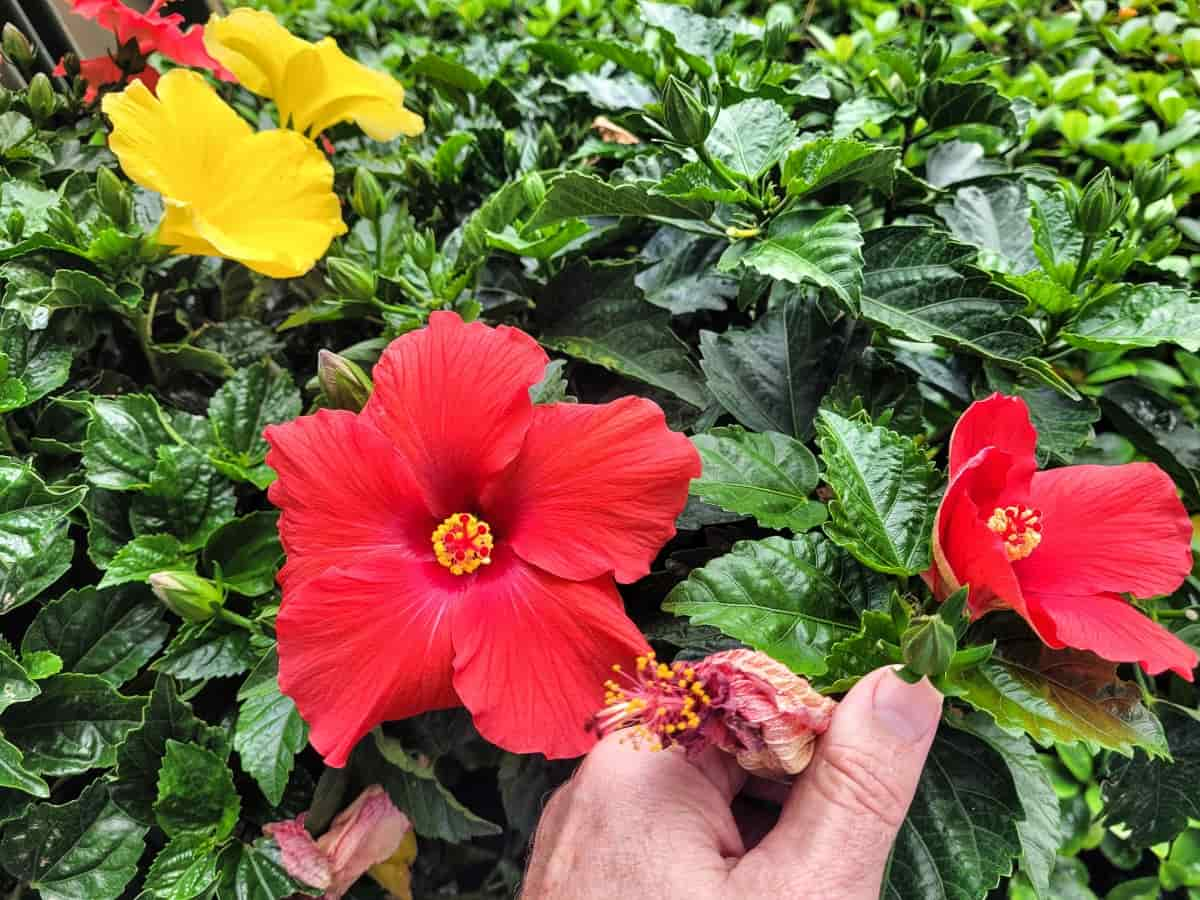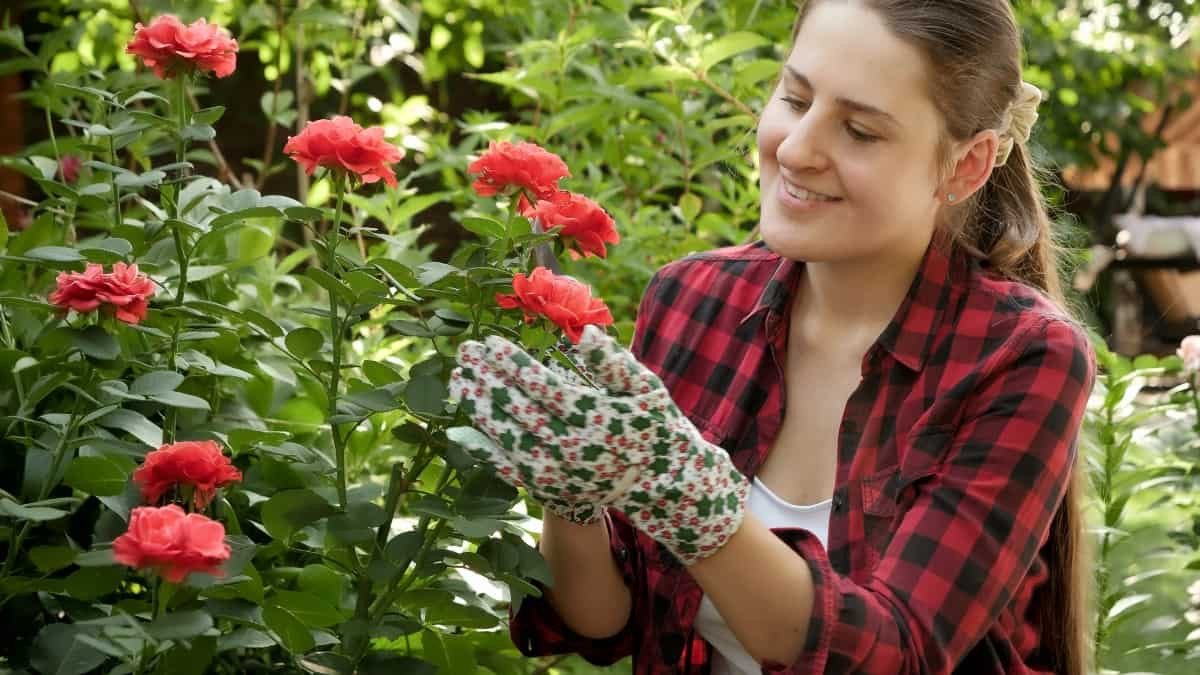Deadheading is an essential garden maintenance practice that can significantly enhance your plant’s health and longevity. It involves the removal of spent, wilted, or dead flowers from plants. This practice not only boosts the aesthetic appeal of your garden but also fosters plant health and extended blooming periods. Particularly for those cultivating flowers in pots or compact spaces, mastering how to deadhead flowers is an indispensable skill.

From annuals to perennials, the deadheading process varies slightly across different types of plants, and knowing when to stop deadheading flowers is equally important. This comprehensive article will provide a step-by-step guide to deadheading flowers, addressing key points such as the benefits of deadheading, the best tools for the task, and how it affects plant health and growth.
Why Remove Dead Flowers from Plants
Benefits of Deadheading Flowers
The benefits of deadheading flowers are multi-fold. The process prompts new growth, extends blooming, and prevents seed formation. Removing faded flowers keeps plants looking neat and tidy and redirects resources from seed production to more important areas. The energy that would otherwise be used for seed production can be utilized for root and leaf growth, enhancing the overall vitality and longevity of the plant. Deadheading flowers in pots, for example, can significantly increase their blooming period and health, especially given the limited space and limited resources.
When to Deadhead Flowers
Timing is critical in deadheading. The prime time to deadhead is just after flowers fade or die. This will differ among flower species due to their growth patterns and blooming periods. Deadheading should be a regular part of the maintenance for many plants throughout their active growing season. However, it’s equally vital to know when to stop deadheading flowers. Allowing some plants to produce seeds in late summer or autumn can promote self-seeding, resulting in new plants in the subsequent growing season.
Best Tools for Deadheading Flowers
Regarding deadhead flowers, the right tools can make all the difference. The selection of tools primarily depends on the size and type of the plant. A pair of sharp pruning shears are the best choice for large, robust plants. Using your fingers or a pair of tweezers might be more appropriate for small or delicate flowers. Always ensure your tools are clean and sharp to make clean cuts and minimize plant damage.
Deadheading Flowers for Extended Blooming
One of the primary reasons for deadheading is to extend the blooming period of flowers. Plants are tricked into producing more flowers by removing spent blooms to ensure reproduction. This method, known as deadhead tricking, essentially stimulates the plant to produce new blooms. Deadheading flowers for extended blooming is particularly beneficial for pot flowers, which often have a shorter lifespan due to their confined environment.
Deadheading Flowers for Plant Health
Beyond the aesthetic and blooming benefits, deadheading also significantly contributes to plant health. Dead flowers can be a breeding ground for fungal diseases and pests. Removing them promptly helps to prevent these potential problems, keeping your plants healthier. Additionally, by preventing the formation of seeds, deadheading enables plants to conserve their energy and direct it toward their growth and health.
Deadheading Flowers to Promote New Growth
Deadheading flowers also stimulate new growth. The plant naturally channels its energy toward seed production as flowers fade and die. By removing these dying flowers, the plant redirects its energy towards new leaf and flower growth. This leads to a denser, more robust plant, which is particularly advantageous for deadheading perennials for better performance.
In case you missed it: How to Grow and Care for Spider Plant: Planting Instructions

Deadheading Flowers to Prevent Seed Formation
One of the main physiological responses of a plant to deadheading is the prevention of seed formation. When flowers are left to fade on the plant, they eventually produce seeds. While this is part of the plant’s natural reproductive cycle, it also signals it to stop producing new flowers. Therefore, gardeners trick the plant into producing more flowers to generate seeds by deadheading flowers. Additionally, preventing seed formation helps control the potential for unwanted spread or self-seeding of certain plant species in your garden, maintaining an orderly and planned aesthetic.
Deadheading Annual Flowers
Annual flowers, by nature, have one growing season to produce leaves, flowers, and seeds. These plants put much energy into producing seeds, which can often limit their bloom time and overall vitality. Deadheading annual flowers can help you maximize their short life span. After blooms wilt or fade, remove them by cutting or pinching them off just above the next leaf node or set of leaves. This practice will stimulate the production of new blooms, often resulting in a second wave of flowering.
Deadheading Perennial Flowers for Better Performance
Perennial plants are known for their ability to bloom over many seasons in their lifetime. However, their blooming can be enhanced by the simple practice of deadheading. Unlike annuals, which often have a single blooming period, perennials may have several periods throughout the season. Knowing how to deadhead perennials involves removing only the spent flowers, not the entire flower stalk. By doing this, gardeners encourage not just the growth of more flowers but also healthier, more vigorous plants.
Implementing Deadheading in Your Regular Garden Routine
To leverage the full benefits of deadheading, it is crucial to integrate it into your regular garden routine. Make it a habit to inspect your plants regularly, ideally daily, for spent flowers. Always use clean, sharp tools for the task or your fingers in case of delicate flowers.
In case you missed it: Instructions to Grow and Care for Ficus Tree

For larger flower heads or flowers on thick stems, use a pair of gardening shears or scissors, cutting at a 45-degree angle for better healing and growth. You might find smaller flowers easier to deadhead with your fingers. Simply hold the spent bloom and snap or pinch it off at the base. Regular deadheading will keep your plants healthy, promote growth, extend bloom times, and maintain the overall aesthetic appeal of your garden.
Conclusion
Whether you’re a seasoned gardener or a budding green thumb, understanding the process and benefits of deadheading flowers is a valuable skill. Deadheading serves multiple functions, from promoting new growth and extended blooming to enhancing plant health and preventing seed formation.
Despite it seeming like a meticulous task, especially for flowers in pots, the reward is well worth the effort, translating into a vibrant, healthy, and prolonged display of your favorite blooms. And remember, while the focus here is on deadheading flowers, the same principles apply to other flowering plants – so don’t stop at your flower garden. Now that you’re equipped with this step-by-step guide to deadheading flowers, your garden will surely be the envy of the neighborhood.
- Ultimate Guide to Ossabaw Island Hog: Breeding, Raising, Diet, and Care
- Ultimate Guide to Juliana Pig: Raising Facts, Size, Diet, Care, and Lifespan
- Raising Lleyn Sheep: Disadvantages, Price, Uses, Characteristics, and Care
- Ultimate Guide to Meishan Pig: Breed Facts, Breeding, Raising, and Care
- Ultimate Guide to Teacup Pigs: Raising, Diet, Lifespan, Cost, and Care
- Guide to Raising Poll Dorset Sheep: Facts, Profile, Characteristics, Uses, and Care
- Ultimate Guide to Bighorn Sheep: Characteristics, Diet, Lifespan, Breeding, and Lifecycle
- Ultimate Guide to Raising Katahdin Sheep: Farming Facts, Breed Profile, Uses, and Care
- Ultimate Guide to Raising Oreo Cows: Belted Galloways Farming Facts, Profile, Uses, and Care